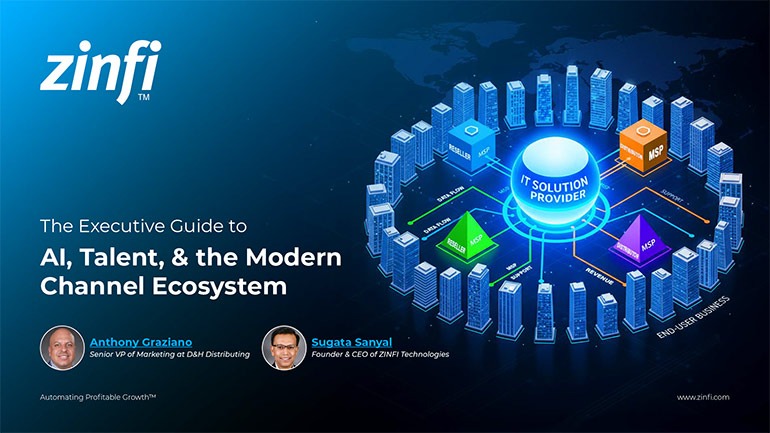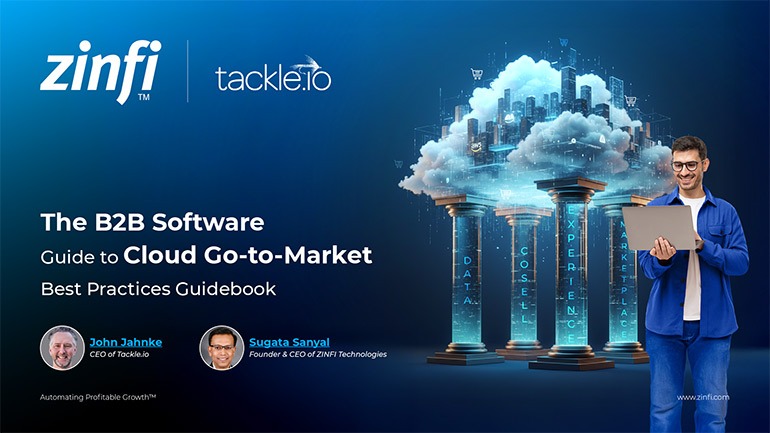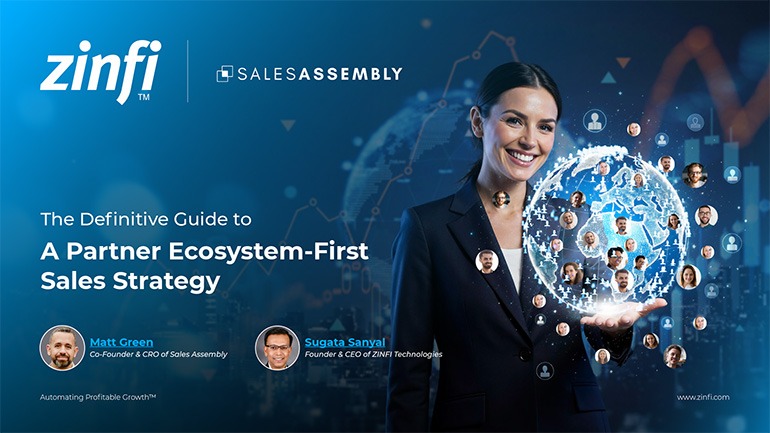Best Practices Articles

What Is the Best-of-Breed Partner Relationship Management Platform
A best-of-breed partner relationship management platform should address the management of the partner lifecycle in a highly efficient and effective way. The five core elements are partner recruitment, partner onboarding, partner training, partner marketing and partner incentives management. In addition to addressing these five core elements individually, a best-of-breed partner relationship management platform should also be able to unify the lifecycle management across these five core stages. Let’s take a look at these core elements and see how they fit together.
- Partner Recruitment - I’ll begin with partner recruitment. In this phase, a company needs to be able to upload a list of prospective partners collected from various sources or set up a search and social campaign to drive traffic, via both inbound and outbound methods, to a destination microsite. On this microsite, the company needs to articulate in a very clear way why a potential channel partner should consider joining the company’s program. As a part of this process, the company may also hire outsourced telemarketing or event marketing, or an inside sales team may be engaged to reach out to the targeted list of partners and engage in dialogue to get them excited about various aspects of the company’s partner program. This process of recruitment can last anywhere between a couple of months and several years, depending on the company’s overall channel strategy. Often, large organizations end up acquiring smaller entities, which creates the need to re-recruit existing partners for new product categories. Here’s the bottom line: A partner relationship management platform should be able to provide an integrated set of outreach components—e.g., microsite, events—that inbound and outbound marketing teams can use to engage and excite potential partners and motivate them to join the partner program.
- Partner Onboarding - Once a set of partners have signed up for an existing channel program, the next step is to provide a high-quality experience to the partner base related to partner onboarding. During this phase, partners will need to sign a contract with the company based on the products and categories they will carry. They will also very likely have to put together a business plan, depending on what type of partner they are and the goals they are pursuing. The next step would be to make sure they can track their progress as they move through onboarding and initial training stages. The vendor who has recruited the partners should also be able to track the status of partners at various stages. Automating all of these onboarding steps is critical to providing a high-quality experience from the very beginning as partners begin to engage with the vendor. A state-of-the-art partner relationship management platform should address this need clearly and comprehensively.
- Partner Training - The third core element of the partner lifecycle is partner training. This applies both to new partners and existing partners. Very likely, a company with a robust channel program is constantly introducing new programs, new products, new offers and new pricing strategies. Accordingly, channel partners need to be continuously trained on various aspects of the changes a company is making to its channel program. This is where a learning management system (LMS) can play a huge role. A best-of-breed partner relationship management platform should provide modules for course creation, course management, learning path management and certification management. Training is a very important aspect of partner relationship management. A highly trained partner also tends to be a highly satisfied and successful partner. Therefore, it is critical to be able to create various training programs on a regular basis. It’s also critical to use other integrated marketing tools like search, social, events, microsites and so on to promote training programs and keep partners engaged in various aspects of training.
- Partner Marketing - Once onboarding is complete and the partner is engaged in various training programs, the next step is to focus on generating leads and driving demand. This is where partner marketing and channel marketing automation capabilities come in. A best-of-breed partner relationship management platform should provide an integrated set of through-channel marketing and/or through-partner marketing automation tools. Such capabilities should include end-user-facing search marketing, social marketing, microsite marketing, event marketing, video marketing and various other digital and analog marketing tools. When partners have the ability to use preloaded campaigns and assets and quickly set up co-branded campaigns and launch them to their target installed base of clients, they are well-positioned to drive the effectiveness of their partner marketing initiatives, whether those initiatives are B2B or B2C. Most partners do not have much in the way of marketing resources; therefore, in addition to a marketing automation platform, a vendor needs to consider providing marketing concierge services—either insourced, by leveraging internal marketing teams, or outsourced to an external partner marketing concierge company like ZINFI. In fact, a partner marketing automation tool and a partner marketing concierge program are probably the two most important components a partner can use for generating leads. As such, a partner relationship management platform should be able to address both capabilities by providing an integrated set of partner marketing tools as well as automating marketing concierge activities and processes.
- Partner Incentives Management - To address the final core element of partner relationship management, vendors need to be sure their partners are continuously trained and informed about new campaigns and programs and incentives that are being loaded into the platform on a regular basis. Performance-based incentives are essential to generating leads, and a unified approach to partner incentives management is critical. Application modules like market development funds (MDF), co-op management, rewards and rebates are key elements in automating incentive programs where a partner’s performance can be directly tied to the rewards or incentives they can earn, both at the individual level of a sales rep or technical person and at the company level where the company can earn additional rebates and/or margin when they hit specified sales targets.
To be successful, any partner program requires several key elements. It requires a structured channel program (which we’ve talked about in other articles). It requires clear channel policies so partners know exactly what they need to do to perform successfully and how their performance is going to be measured and rewarded. It requires clear programs that address both technical and non-technical aspects of the channel program. It also requires a platform which enables a unified approach to channel management. A best-of-breed partner relationship management platform can make a huge difference. Companies that have deployed, or are in the process of deploying, point solutions in the attempt to create a patched-up partner portal or partner management system are likely to regret it in the long run. They will end up spending a lot more money and end up with a far inferior partner experience and internal experience than they would if they were to consider one of the new best-of-breed partner relationship management platforms that are currently being offered in the marketplace by ZINFI and others.
Best Practices Guidebook
 Modernizing Channel Marketing: AI and Ecosystem Enablement Best Practices
Modernizing Channel Marketing: AI and Ecosystem Enablement Best PracticesDownload for FREE
 The Channel’s Shift to Partner-Led With AI Best Practices
The Channel’s Shift to Partner-Led With AI Best PracticesDownload for FREE
 Hyperscalers, ISVs, and AI: Shaping the Future of B2B Software Distribution
Hyperscalers, ISVs, and AI: Shaping the Future of B2B Software DistributionDownload for FREE
 Definitive Guide to a Partner Ecosystem-First Sales Strategy
Definitive Guide to a Partner Ecosystem-First Sales StrategyDownload for FREE
 The Partner-Led Digital and AI Transformation Best Practices
The Partner-Led Digital and AI Transformation Best PracticesDownload for FREE
 Startup Talent Recruitment: Hiring Missionaries, Not Mercenaries
Startup Talent Recruitment: Hiring Missionaries, Not MercenariesDownload for FREE
 The Future of Partner Relationship Management with AI in Partnerships
The Future of Partner Relationship Management with AI in PartnershipsDownload for FREE
 Cybersecurity for the 99%: Strategies from the Frontline
Cybersecurity for the 99%: Strategies from the FrontlineDownload for FREE
 Mastering Partner Relationships: A Strategic Approach to Business Growth
Mastering Partner Relationships: A Strategic Approach to Business GrowthDownload for FREE
 Mastering Partner Relationship Management: Keys to SaaS Channel Success
Mastering Partner Relationship Management: Keys to SaaS Channel SuccessDownload for FREE
 Navigating the AI Revolution: Guide for Partners in the Microsoft Ecosystem
Navigating the AI Revolution: Guide for Partners in the Microsoft EcosystemDownload for FREE
 Mastering the Modern Buyers Journey: Sales Leader’s Guide to AI & Engagement
Mastering the Modern Buyers Journey: Sales Leader’s Guide to AI & EngagementDownload for FREE










